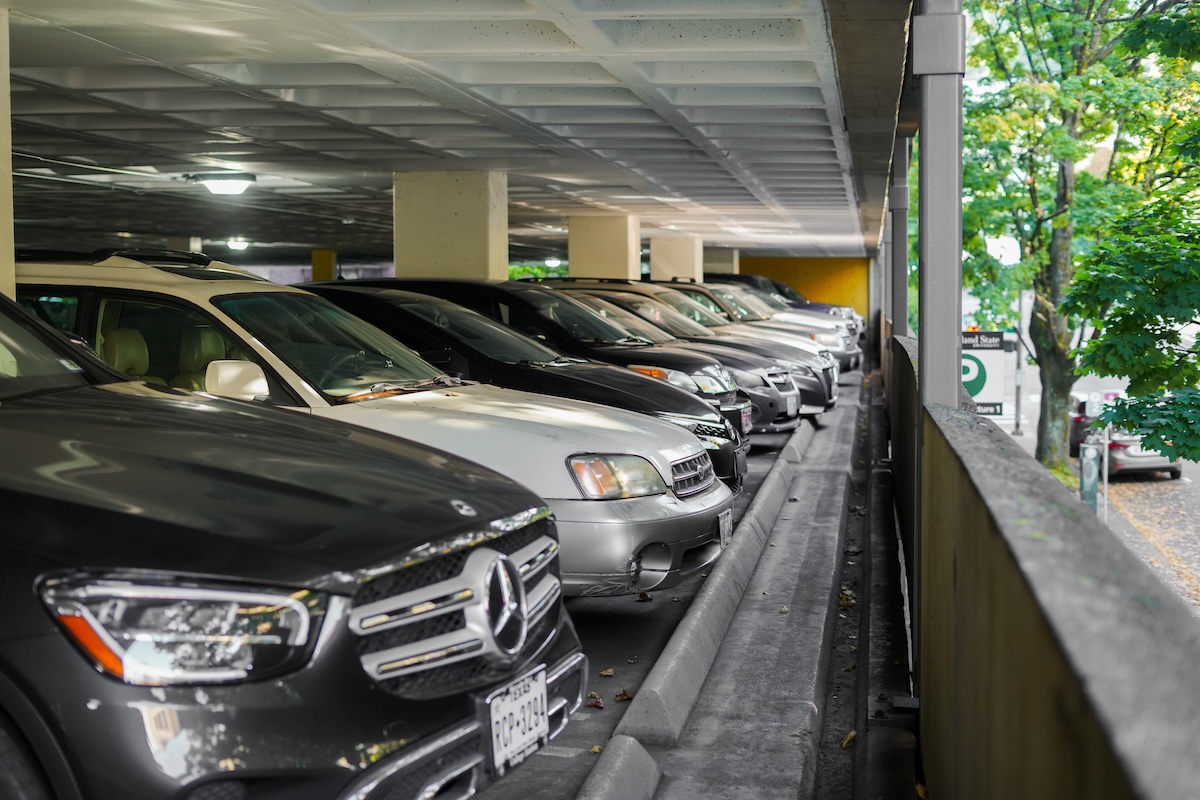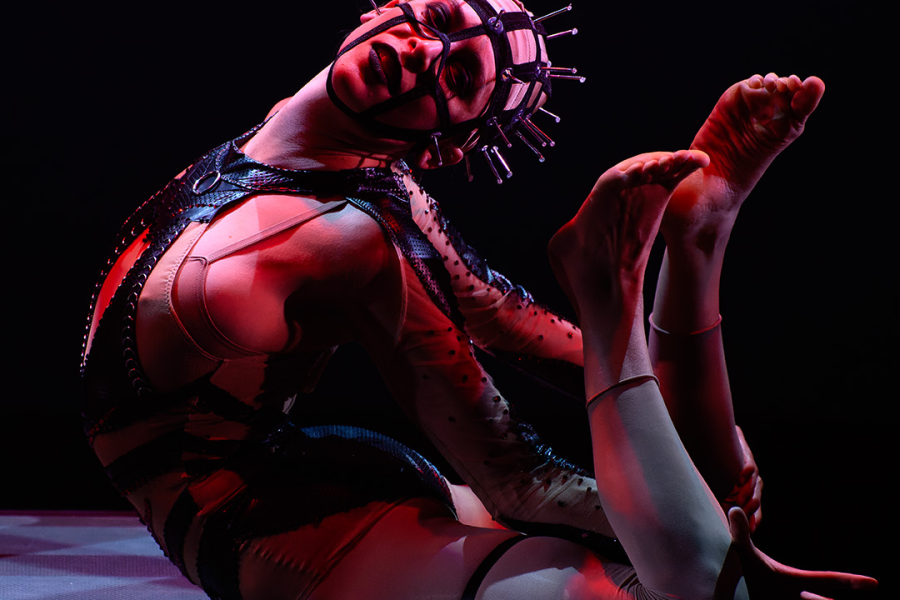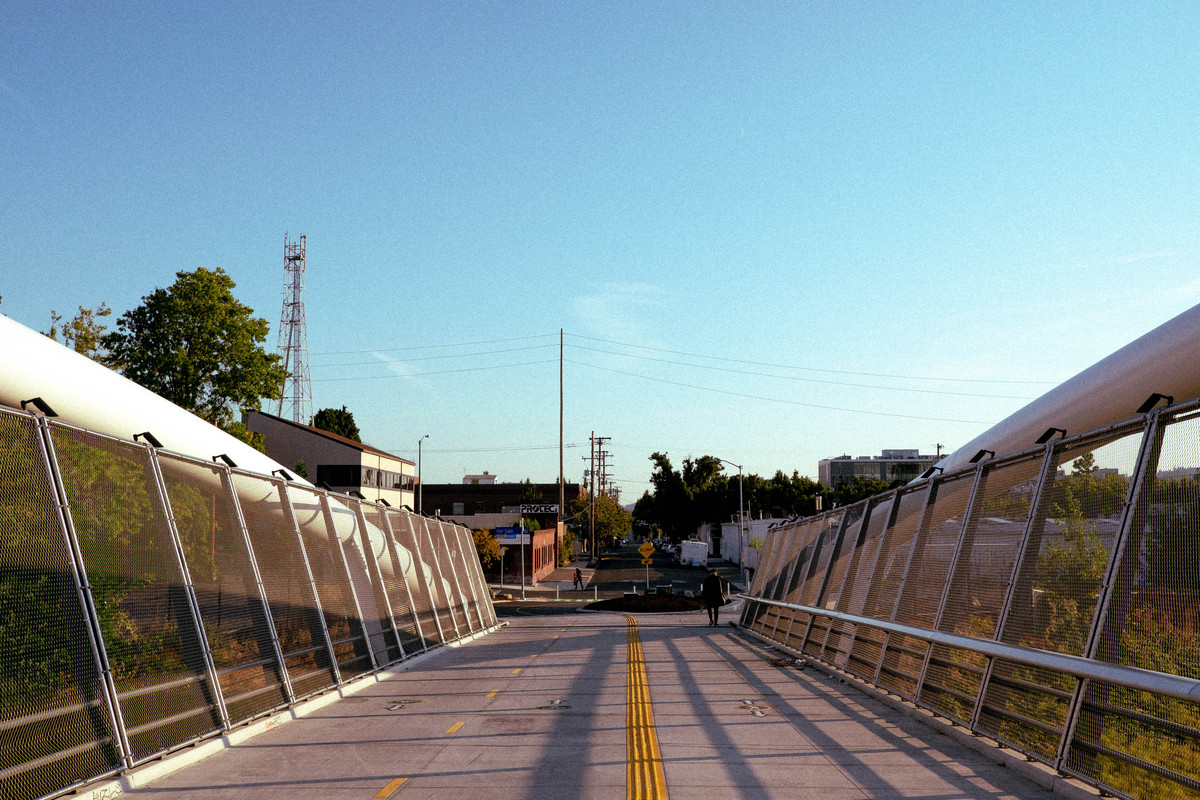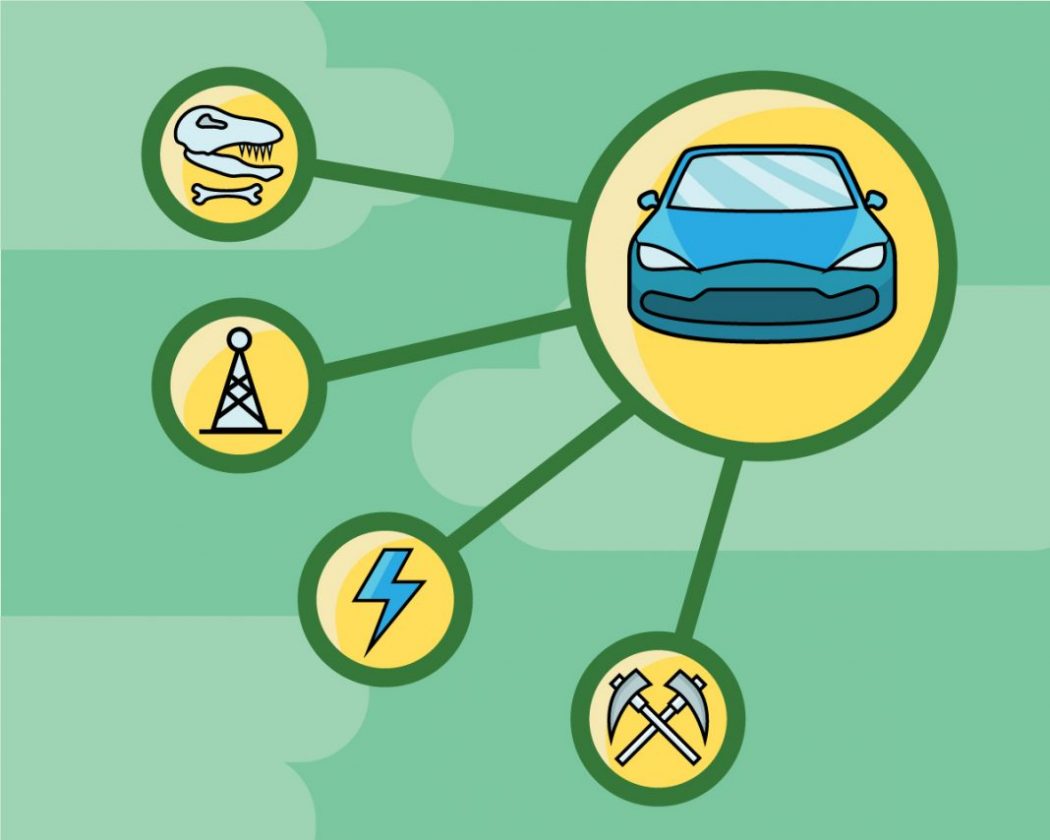There are too many cars at Portland State.
If you’ve ever been to PSU’s campus, chances are you’ve noticed the parking situation. Commuters coming to PSU by car have a few choices. They can park in one of the large campus parking structures or park on the street—that’s if there’s parking available at all.
That gets to the heart of the problem—students shouldn’t be driving cars to campus.
That’s not to blame the students, of course. For many people, it’s far easier to drive than to use transit, and that’s the issue. Despite TriMet’s success and PSU’s efforts to make the campus more accessible, unfortunately, it’s a fact that many students’ only real option is driving.
This is exactly why we should be making it easier for students to use transit, rather than indulging in car-friendly planning with the hope of finally reducing traffic congestion.
The presence of cars on campus isn’t inevitable—it’s a policy choice. According to U.S. News & World Report, less than 5% of students bring cars to campus at universities like Georgetown, Princeton and the University of Pennsylvania. These universities are in crowded urban areas where parking is expensive and limited.
PSU is primarily a commuter school, with only a small percentage of students living on campus. According to PSU statistics, 32.3% of students take public transportation to campus, with another 6.5% bicycling. That’s a good start. However, we can and should reduce the number of students who drive alone to campus, which currently stands at 21.4%.
PSU students can ride the Portland Streetcar for free with their PSU ID cards. With the streetcar fare waived, PSU students can ride many places to and from downtown, such as the South Waterfront, the Pearl District, NW 23rd Avenue and Central Eastside.
This is a model which PSU should follow for all public transit. Waiving the streetcar fare for students successfully encourages transit use, but streetcar routes are still fairly limited with only three loops serviced around the city. Why not expand this free fare to the entire TriMet system?
Public transit is cheaper than a personal car, but students might be more likely to use this option with barriers removed. The Student Viking Pass is a subsidized transit pass for PSU students who are eligible, and this significantly reduces the cost of using TriMet. A fall term parking permit can cost upwards of $400, while a fall term Student Viking Pass costs only $100 and allows students to ride TriMet as many times as they like during the term.
That adds up to $400 a year—not terribly expensive, but still not cheap. The goal is to get people out of cars and onto public transportation, and a large part is making transit more accessible.
Urban greenspaces are essential for city residents’ health and well-being. For starters, the gray infrastructure such as roads, driveways and parking lots which is needed for car travel absorbs a disproportionate amount of heat, contributing to the urban heat island effect and making the city considerably hotter day and night.
In contrast, green infrastructure like tree canopies, parks and other vegetated areas keep heat levels down and help temper the effects of extreme heat events. These events are growing more frequent and more intense due to climate change, according to the Environmental Protection Agency.
A significant problem facing the expansion of green spaces is cars. A large segment of the Park Blocks has an awkward pair of narrow, one-way roads on its outer edges, congesting much of the space with cramped street parking and busy lines of single-file cars. This section of the Park Blocks could be converted into a pedestrian thoroughfare, expanding the sidewalks and greenery to fill the entire street.
Such a conversion is not unheard of. Montgomery Plaza—a pedestrian-only stretch of road between SW 6th Avenue and SW Broadway—used to be open to cars before vehicle traffic was banned in 2019. More recently, the Couch Street Plaza in Old Town transformed an entire city block into a car-free public space in 2022.
“Portland’s streets are for people,” stated Former Commissioner Jo Ann Hardesty about the space. “It is wonderful to see our public right-of-way being used to support small businesses, musicians, and the performing arts at the new Couch Street Plaza. I encourage everyone to visit and support the Old Town community and their beautiful new public space.”
Portland’s streets are for people, and we should act like it. Under the Portland Bureau of Transportation’s (PBOT) Public Street Plaza program, 17 pedestrian plazas have opened across the city, from SE Woodstock Boulevard to N Lombard Street.
That’s a good start, but it can and should be even more expansive. According to PBOT, “The Public Street Plazas program has had significant public support, with 86% of survey respondents supporting keeping street space open for public plazas beyond 2022.”
Four PSU students created a plan for more reduced-car plazas with the 2022 Downtown Portland Living Streets plan to increase pedestrian spaces without entirely shutting out cars. Cameron Bennett—engineering student and team member—described the proposed streets as “a pedestrian-focused equivalent to the neighborhood greenways in Portland.”
“Not explicitly car-free, but kind of implicitly,” Bennett stated. “It’s a street where the design shows that it’s a space for pedestrians first and cars second: a street where people can feel comfortable lingering, mingling, and enjoying being in public space.”
In a densely populated area like downtown, there are opportunities for even more pedestrian plazas, especially considering the concentration of public transit in the area. The Urban Plaza has easy access to transit, flanked on either side by MAX trains and buses, with the Portland Streetcar stopping right in the middle of the square. Leaning into this demand or reducing the use of cars in the area would likely encourage more commuters to use transit.
Streets such as 5th and 6th Avenue are already a part of the Portland Transit Mall—a transit hub with compact stops, large transit shelters and reduced car traffic. Cars are limited to only the left-hand traffic lane along these streets. It’s not a giant leap to suggest that cars be barred from the transit mall entirely. That’s how it used to be.
When the mall was first constructed, the automobile lane was limited to three-block segments, according to TriMet. Cars were only permitted to drive the entire mall length after a 2007 redesign. This is recent history.
PSU can make small but significant improvements to promote public transit and reduce the use of cars on campus. PSU is committed to climate action, planning to make the campus carbon neutral by 2040. There is no better place to start than embracing climate-friendly public transportation in our urban campus.






